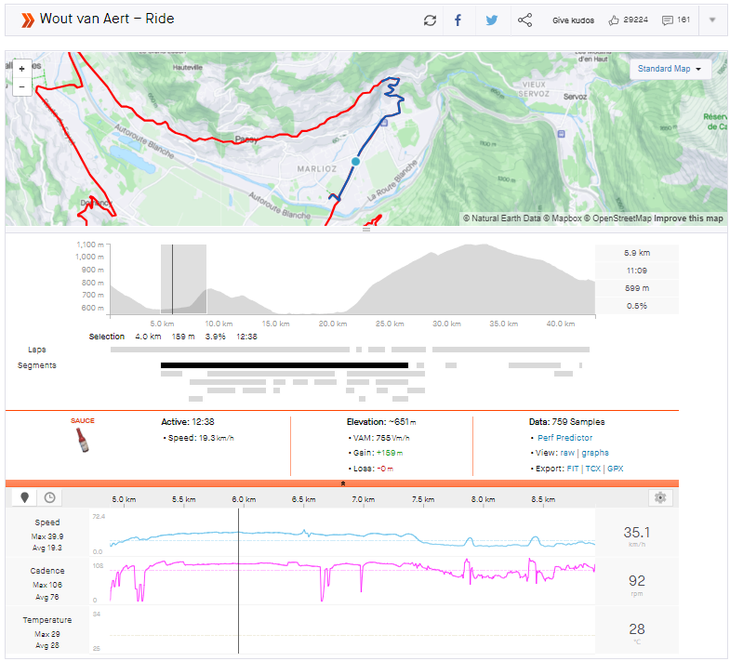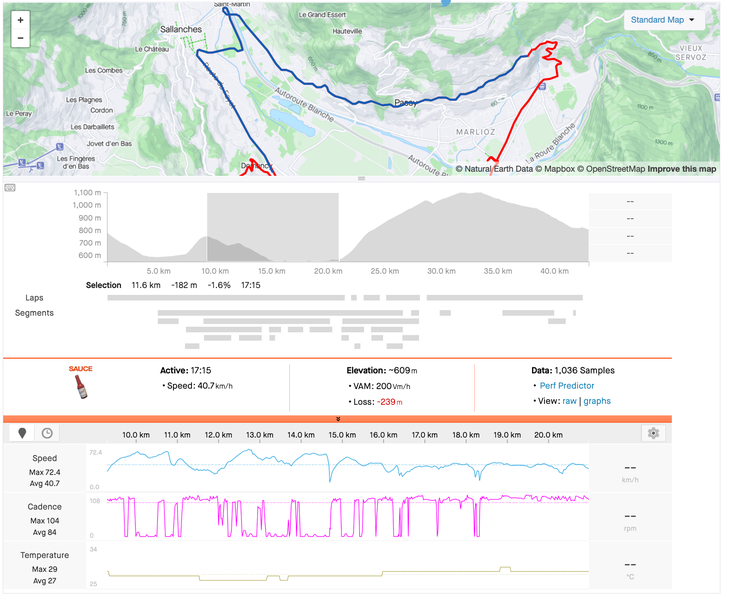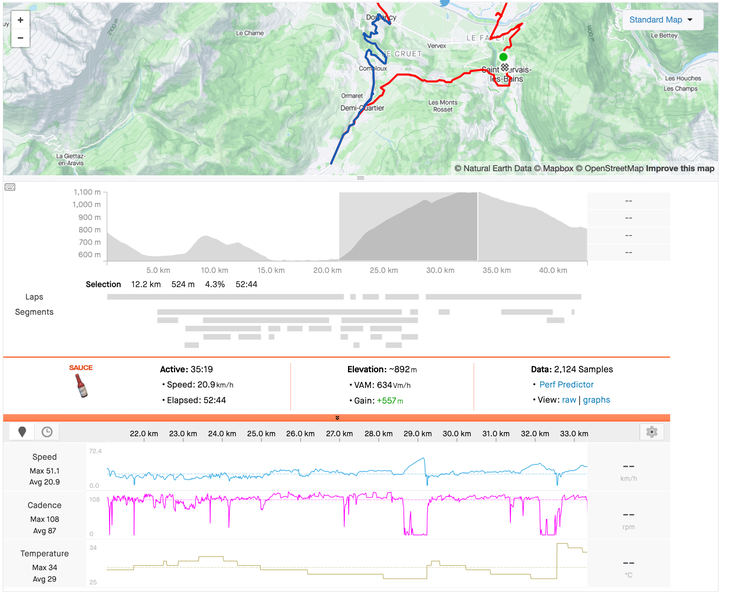Only 10 seconds separate the top two riders in the battle for the yellow jersey at this year’s Tour de France. Jonas Vingegaard leads Tadej Pogačar after 15 stages, and up next is an unorthodox individual time trial from Passy to Combloux. The Stage 16 time trial is 22.3km long with 647m of elevation gain, but most of the climbing comes in the final 6km, which averages 6.9%.
In my opinion, a bike swap is unlikely for the GC contenders because there are only 1.2 steep kilometers of climbing that average over 10%. The rest of the climbing is 5-8% on average, with flatter sections where the riders will gain significant speed. Modern-day time trial bikes are super lightweight and the world’s best will be going around 20kph for a couple of minutes on the slowest section of the time trial.
In this preview, we’re going to take a closer look at the time trial performances of Jonas Vingegaard and Tadej Pogačar and predict what could happen in Stage 16 of the Tour de France.
First, let’s break down the time trial into three different parts: opening 4km with the Côte de la Cascade de Coeur, the downhill and flat section to Domancy, and the final climb to Combloux.
Read also:
- Power Analysis: Tour de France – Pogačar, Vingegaard, and Victor Lafay
- The power numbers at this year’s Tour de France are the highest in the modern era of cycling
Opening 4km of the TT
After a flat start, the riders will ascend the Côte de la Cascade de Coeur, which is 1.5km at 8.5%, with pitches exceeding 10%. This could be an advantage for Pogačar, who has a sharper kick than Vingegaard, especially when both riders are fresh.

Descent and flat section
After the Côte de la Cascade de Coeur, there is about 6km of descending and another 6km of flat before the final climb. The downhill looks fast and not too technical, which could mean that the heavier Pogačar takes time on Jonas. However, we’ve seen in other time trials that weight and power can be canceled out by world-class time power and aerodynamics (i.e., Remco Evenepoel consistently beating Flippo Ganna, Stefan Küng, and Wout Van Aert).

Final climb to Combloux
The last and most crucial portion of the time trial is the 6km, 6.9% climb to Combloux. However, the first section of this climb includes the Côte de Domancy (2.8km at 8.5%), which includes a 1.5km section at nearly 11%. This is where teams will have to do a bike swap, or their riders will remain on their TT bikes for 3.3km more of climbing.
Overall, the final climb to Combloux should take about 15-20 minutes. Coupled with the Côte de la Cascade de Coeur in the opening kilometers, there are about 20-25 minutes of climbing in the Stage 16 TT and only 12-14 minutes of flat and downhill.

Recent form, peak power, and prediction
It’s hard to argue which rider is currently in better form: Vingegaard or Pogačar. Both riders have had an off-day but have resisted completely blowing up. They have both put their teams on the front, asking for more, and then going all-in with a violent acceleration. But more often than not, in this year’s Tour de France, Vingegaard and Pogačar have been glued to each other’s wheels.
Power and aerodynamics will determine the result of this individual time trial, but that’s impossible to predict since we don’t know Vingegaard or Pogačar’s exact numbers. But we do know of many other factors that could influence the outcome of this TT.
First and foremost, the Stage 16 time trial comes after a rest day, which is notorious for messing with a rider’s form. After a week or more of consecutive racing, a 90-minute spin on a rest day can make or break a rider’s legs, especially before a time trial. Neither Vingegaard nor Pogačar has a history of poor performances after rest days, but it’s certainly worth mentioning.
Second, Pogačar crashed and broke his wrist at Liège-Bastogne-Liège in April, which meant that the Slovenian probably spent a lot of time on his time trial bike on the indoor trainer during his recovery. With a wrist in a cast or brace, it is common for professional cyclists to return to indoor training on their TT bike because it takes the pressure off of the wrists and instead places it on the forearms. In a Tour de France being decided by a handful of seconds, Pogačar’s extra time on the TT bike could make a huge difference.
Third, history may suggest that Pogačar has the advantage. Excluding team time trials, Pogačar has beaten Vingegaard six times to three in individual time trials. However, a closer look at the data and we can see that two of Vingegaard’s three head-to-head TT wins came in the third week of the Tour de France.
Vingegaard beat Pogačar by 35 seconds in Stage 20 of the 2021 Tour de France, a pan-flat 30.8km TT. At the end of the 2022 Tour, Vingegaard beat Pogačar by eight seconds in Stage 20, a lumpy 40.7km TT in which Vingegaard notably took it easy on the descents to preserve his three-and-a-half minute lead over Pogačar.
When you take everything into consideration, I think Jonas Vingegaard comes out on top, narrowly beating Pogačar by less than 10 seconds in this year’s Stage 16 time trial. While logic may suggest that Pogačar will be better fresh, that he will be faster on the downhills and flats, and that the shorter climbs suit him, I believe that the data suggests otherwise.
Vingegaard has made massive improvements to his flat time trial speed over the past few seasons, and his descending is clearly better than Pogačar’s despite their weight difference. History suggests that Vingeaard is stronger than Pogačar in the third week of a Grand Tour and that Vingegaard’s short climbing efforts are stronger than ever.
At the beginning of the 2023 Tour de France, it was said that the Col de Marie Blanque was the perfect climb for Pogačar and that Vingegaard needed longer and harder climbs to attack. But then the Dane dropped Pogačar with a ridiculous 23-minute effort not too dissimilar from the climb coming up to Combloux.
That’s what I think will happen. But then again, I never would’ve predicted that Victor Lafay would be the only rider to stay with Pogačar and Vingegaard on the Côte de Pike, that Jasper Philipsen would clean up four sprint stages in the first 11 days of the Tour, and that Carlos Rodríguez would win Stage 14 ahead of Pogačar and Vingegaard.
This Tour is full of surprises.
***
Power Analysis data courtesy of Strava
Strava sauce extension
Riders:
